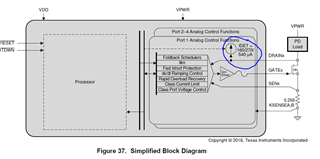Hi team,
I have two questions that I don't understand.
1. In 802.3at, when to use Alternative A (1236) of twisted pair and when to use Alternative B (4578)?
2.In TPS23861,

When will IDET=540uA appear? Thanks.
Best Regards
Charlie Xiao
This thread has been locked.
If you have a related question, please click the "Ask a related question" button in the top right corner. The newly created question will be automatically linked to this question.
Hi team,
I have two questions that I don't understand.
1. In 802.3at, when to use Alternative A (1236) of twisted pair and when to use Alternative B (4578)?
2.In TPS23861,

When will IDET=540uA appear? Thanks.
Best Regards
Charlie Xiao
Hi Charlie,
Please see my responses below.
1. IEEE802.3at standard defines the twisted cable pairs in two different configurations Alt-A and Alt-B. Alt-A is pair 12-36 and Alt-B is 45-78. The difference is Alt-B are considered the "spare" pairs. There is no hardware difference between Alt-A and Alt-B just that per standard Alt-A is typically used since Alt-B are "spare" pairs and mostly only used for data. Please also note TPS23861 only supports Alt-A configuration.
2. IDET is the detection current under different test conditions. IDET=540uA this is high current detection point where Vvpwr - Vdrain = 0V.
Very Respectfully,
Brandon Beader
Hi Brandon,
Thank you for your answer.
I would like to ask if IDET=540uA occurs only when the port is short-circuited or the port resistance is extremely small. Thanks.
Best Regards
Charlie Xiao
Hi Charlie,
IDET=540uA occurs when during 4-point detection, the first measured resistance is <2k (Open Circuit/Low Resistance), then we sink 540uA since higher current provides higher degree of accuracy for Low R.
Very Respectfully,
Brandon Beader